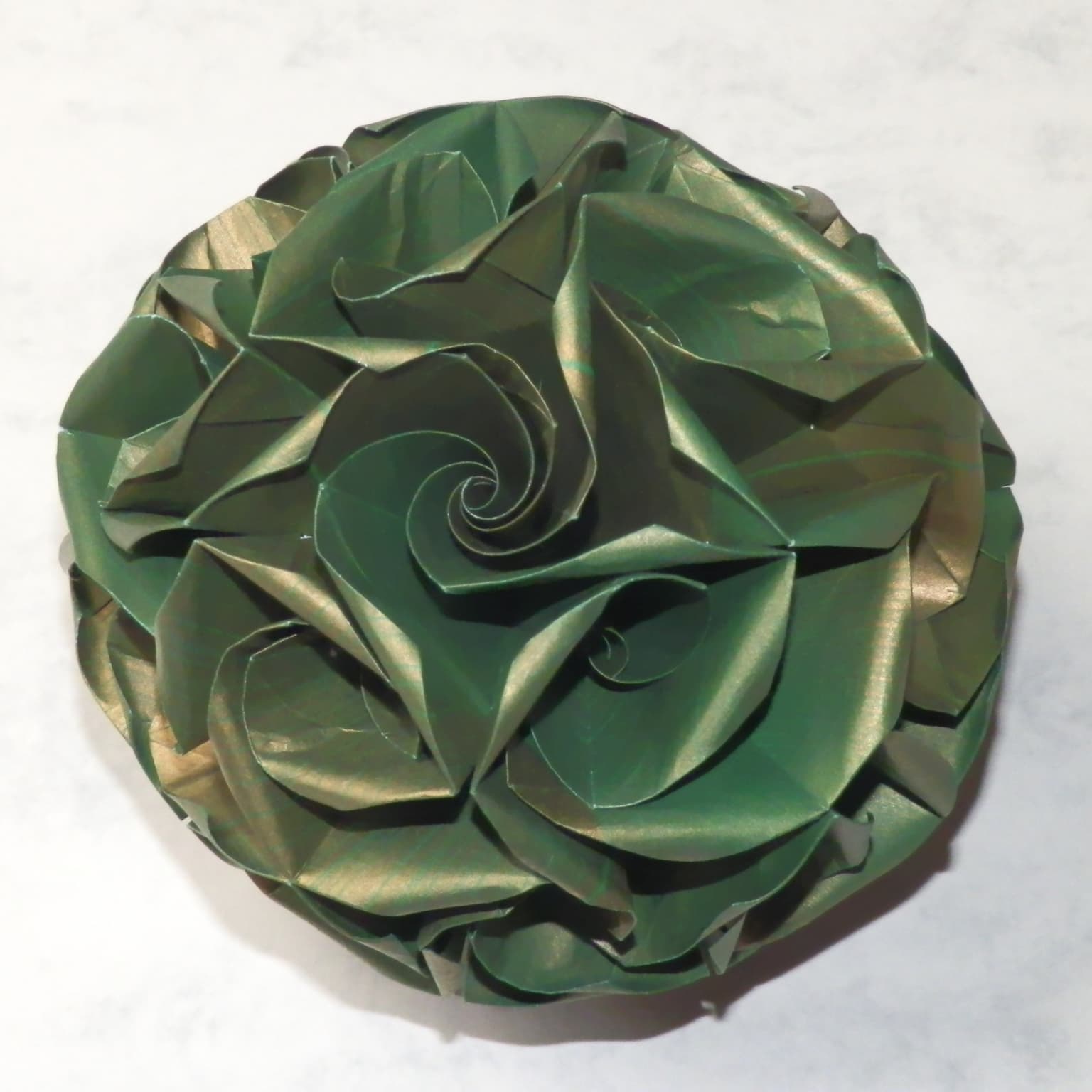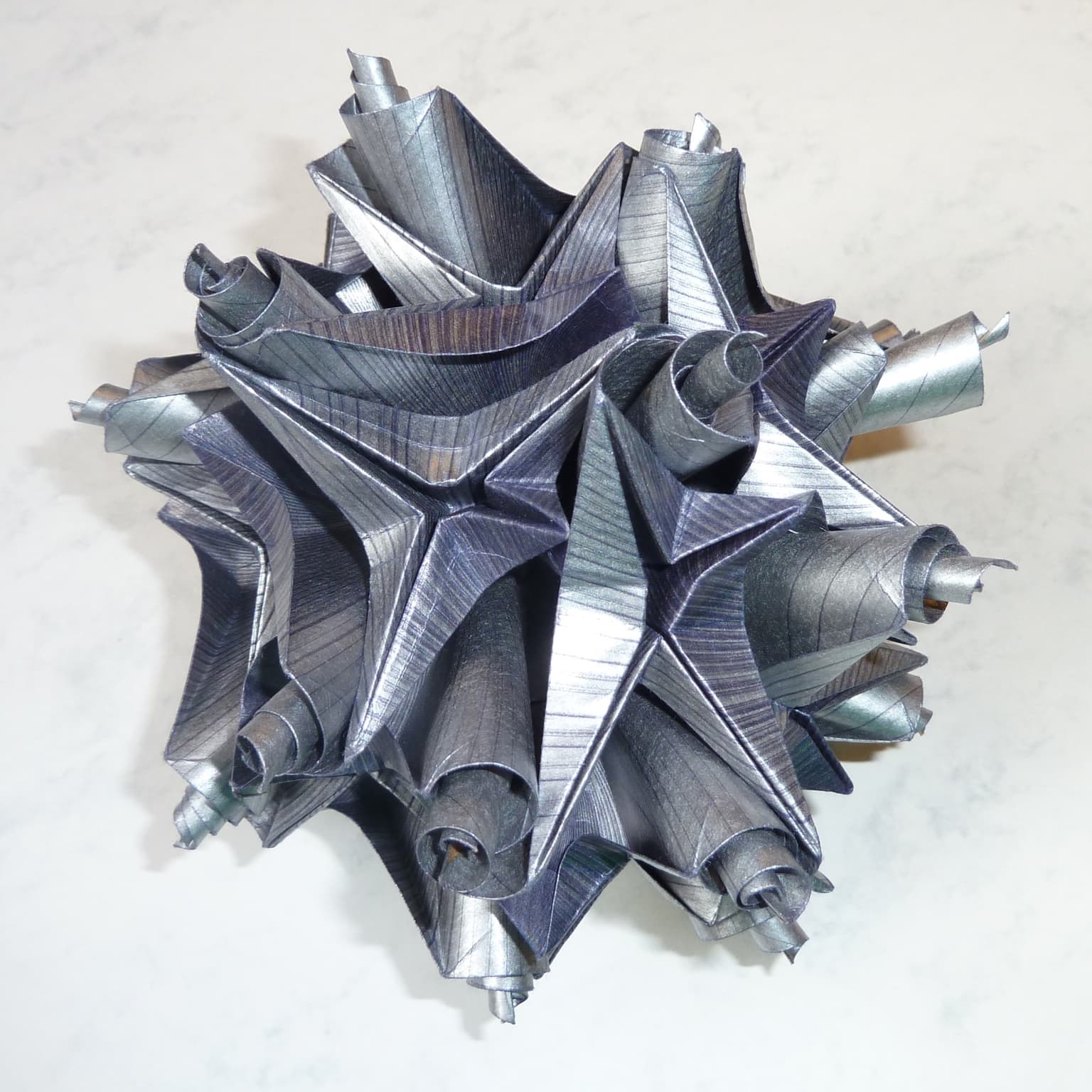Krystyna Burczyk
Artists
Krystyna Burczyk
Artist
Lisbon, Portugal
Statement
Paper is my medium and paperfolding (origami) is my favorite technique. When I design a new artwork I avoid traditional origami bases. I prefer folds and constructions useless for most of paperfolders. I reduce number of folds, place folded lines in unusual configurations, do not rely on strict constructibility of folds and leave symmetry away. But I still depend on geometric structures. When I create, I move and push a piece of paper in my mind and I imagine folds and curved shapes resulting from the paper movement. I blend rigorous and abstract geometric shapes with material and flexible pieces of folded paper into united forms. A spectator may admire spiral twisting around each other, arcs, convex and concave surfaces. Or explore deeper a geometric structure. Shapes derived from flat piece of paper and geometric concepts begin their independent life. Their internal beauty may be discovered only if the artwork is reinterpreted again.
Artworks

Broken Cube
9cm x 9cm x 9cm
folded paper
2013

Golden Dream
13cm x 13cm x 13cm
folded paper
2012

Fighters
17cm x 17cm x 17cm
folded paper
2012